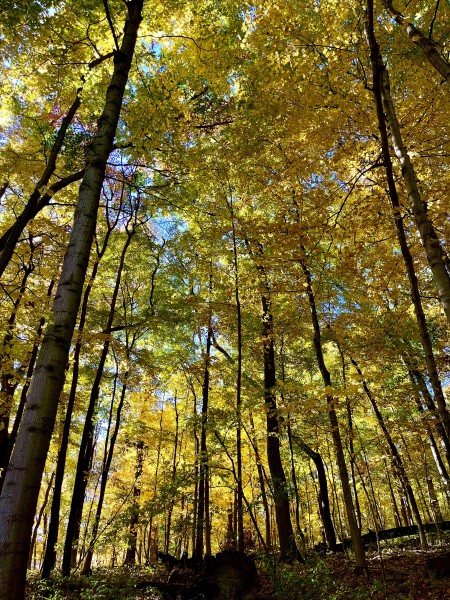Beyond the Individual: the Kenyon First-Year Experience in Community

When asked to design and teach a freshman-only English class as part of her Marilyn Yarbrough Dissertation/Teaching Fellowship at Kenyon for the 2022-2023 academic year, Professor Garcia chose to draw from her past scholarly experiences centered on women of color feminism, Latinx literature, and Native women writers, along with other influences, to devise a course centered on the theme of relationship. A Ph.D. candidate in the comparative literature department at SUNY Binghamton, Professor Garcia has devoted ample study to group identities, interpersonal connections, and concepts of exile and longing among minority groups in the United States.
“I thought this was a great opportunity, especially because it’s a freshman class, to think about relation intellectually, in scholarship, in reading and writing, which I think is a really powerful space of transformation, but also…with my students…[to] build a relationship to Kenyon as a place,” Garcia reflected. “It's a really fun way to engage the community of Kenyon as part of the class and as freshmen. They’re new. I’m new. We don’t know the spaces, so this was an opportunity to sort of shift our way of learning.”
For Garcia, relationships aren’t limited to the interpersonal sphere: they also occur between people and the environments they inhabit. I visited a class session during a unit framed by Robin Wall Kimmerer’s book Braiding Sweetgrass: Indigenous Wisdom, Scientific Knowledge, and the Teachings of Plants. The class session took place outdoors in the Brown Family Environmental Center. After initial preparation from Garcia, students had the opportunity to wander the BFEC with their journals, freely documenting their thoughts, observations and personal relationships to the land around them. When I asked Garcia about her own relationship to Central Ohio, the role of nature quickly became important: “My orientation to Central Ohio (Gambier particularly) has really been like ‘what does it mean to be in a place that doesn’t have a city close by, that really is about land and nature and skies and trees and leaves and rivers?’” Garcia expressed.
The students seem to share Garcia’s affinity for the land. In class, they devote careful contemplation to the notion of reciprocity, considering what it might mean to give to their natural environment as it gives to them. Elianajoy Volin, one of the students in the class, shared a poem she’d written with me. In it, she wonders:
“What if I’m only borrowing
The star stuff in my bones
What if my agreement is to exist
here for a time
Not alone in my mind
but learning
from the beings I’m here with”
This excerpt from Volin’s writing for the course demonstrates the depth and breadth of the material that Garcia encourages students to explore. Students are encouraged to be curious about the world they inhabit, to acknowledge the ways in which they are connected to other beings: both animate and inanimate. The art of building relationships in community, students learn, is about care and reciprocity.